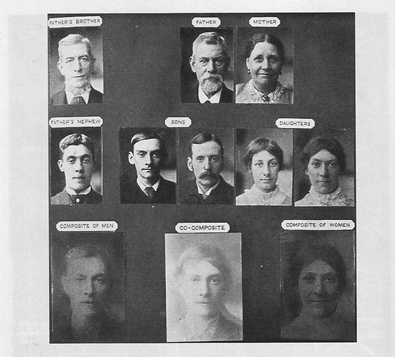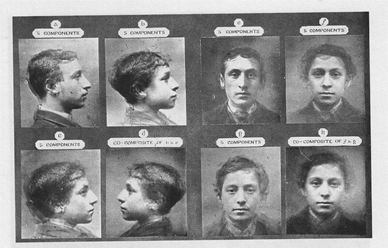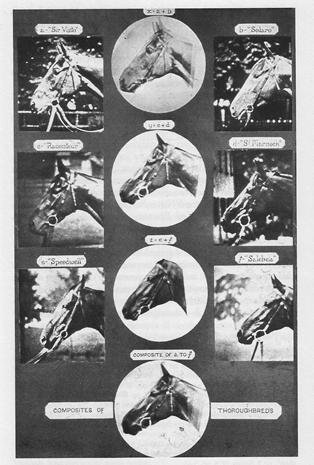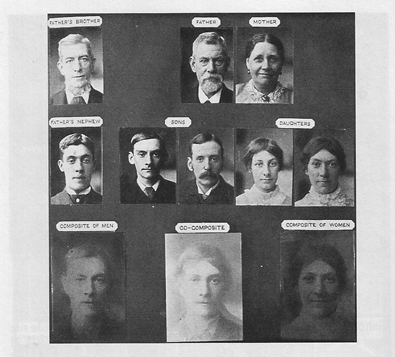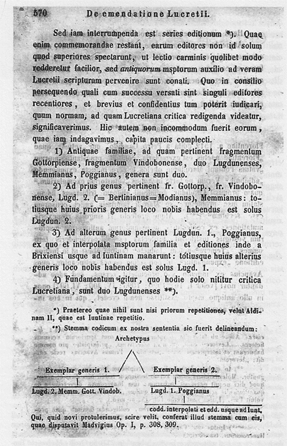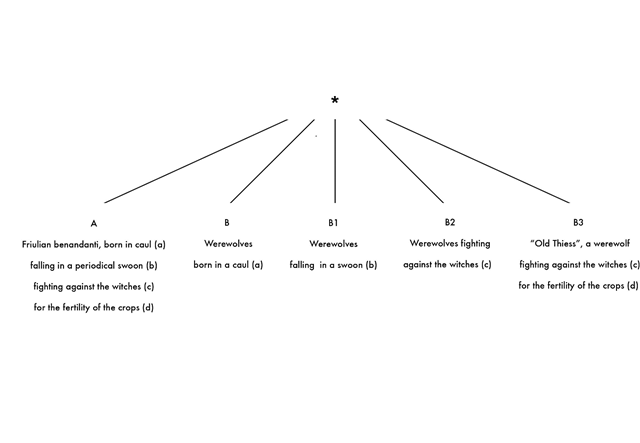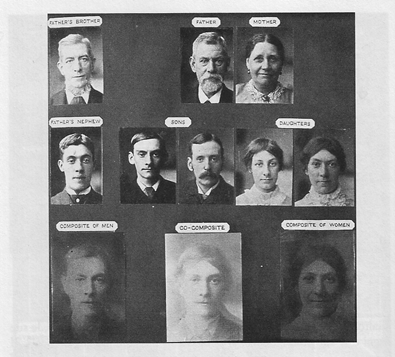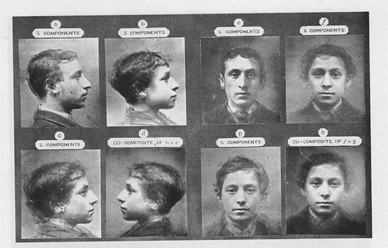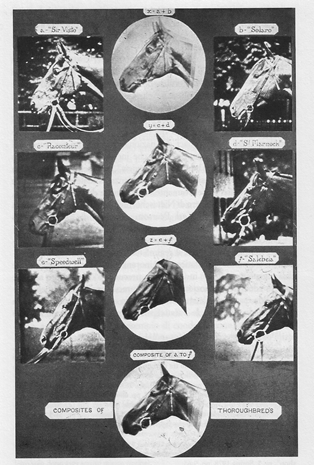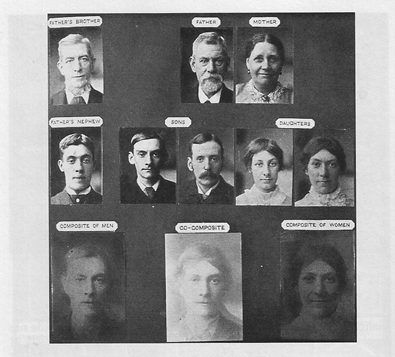Why did I choose this topic for our discussion? There are several answers; let's begin with the most obvious. In the increasingly globalized world we inhabit, a comparative approach to either history or anthropology is unavoidable.1 Stories about werewolves spread from Europe to other continents: any approach to this topic will necessarily involve a comparative framework, but comparison should not be taken for granted: we should also reflect on its aims, assumptions and methods. I will try to do this, focusing on a specific case study involving a rather special kind of werewolf.
1. Underlying my choice there is also a personal reason. Fifty years ago I published my first book, I benandanti, translated into English as The Night Battles. The Spanish translation, published by the University of Guadalajara, echoed the Italian title and subtitle: Los benandanti. Brujeria y cultos agrarios entre los siglos XVI y XVII (2005). The book explored, on the basis of a series of Inquisition trials, some of them very long and detailed, a previously unknown phenomenon recorded in Friuli, on the Northeastern border of Italy, not far from Venice. Men and women, mostly from a peasant background, who called themselves benandanti (i.e. people for the good) argued before the inquisitors that, having been born in a caul (i. e. wrapped in the amniotic sack), they were compelled to leave their body in spirit four times a year, sometimes transformed into animals, to fight against witches and wizards in order to ensure the fertility of the crops. As a weapon, the benandanti used fennel branches, while the witches used sorghum sticks. "And if the benandanti won," one of them said, "that year the harvest will be rich."
The inquisitors heard those tales in astonishment: they had never come across anything like that (my reaction in discovering those documents was no different from the inquisitors' reaction -an analogy which I began to reflect upon some years later [Ginzburg 1989b]). The benandanti claimed to be counter-witches; the inquisitors, on the contrary, regarded them as real witches who participated in a diabolical cult. Relying upon different strategies -leading questions or, occasionally, torture- the inquisitors tried to convince the benandanti. After fifty years and many trials punctuated by endless questions and denials, the benandanti ultimately (although not completely) started to confess to being witches, introducing the hostile image imposed on them by the inquisitors.
What I had discovered in the Friulian archives was, I argued, a fragment from a deep layer of peasant culture: the inquisitors' astonished reaction to the benandanti description of their nocturnal battles with the witches was eloquent enough. But to what extent was the Friulian case, undoubtedly exceptional from a documentary point of view, also related to a unique reality? In my book I advanced the following hypothesis: what happened in Friuli had presumably also taken place in other parts of Europe (and perhaps, I would say today, in other continents as well). Peasant beliefs, mostly centered on matters of fertility and possibly rooted in a pre-Christian past, were reinterpreted by the inquisitors as diabolical cults -and subsequently uprooted. A single, also exceptional, case seemed to support my hypothesis: a trial which took place in 1692 at Wenden, today Cesis, not far from Riga (at that time Livonia, presently Latvia). The defendant, an old man nicknamed "Old Thiess" was accused of heresy: he counteracted by objecting that he was a werewolf and therefore used to go to Hell with other werewolves three times a year during the night to recover the seeds of grain that had been taken away by witches. "We are the hounds of God," Thiess said, referring to werewolves, thus subverting the traditional stereotype that identified them with diabolical beings.
Here was a werewolf saying that he used to fight in spirit, together with other werewolves, against witches for the fertility of the crops. Could I compare Thiess's isolated, anomalous case to the Friulian benandanti? I thought so -but what kind of comparison could I use? Morphological? Or historical? The former perspective takes only formal analogies into account, disregarding both space and time, while the latter analyzes the same analogies from a perspective based on space and time that raises the possibility of mutual influences, of a common filiation, etc. I had first come across this alternative as a student when I read Marc Bloch's great book Les rois thaumaturges (1924, translated into English as The Royal Touch). In the introduction, Bloch contrasted two different kinds of comparison: "ethnological" (he did not use the word "morphological") and "historical," based on phenomena related to societies that had either been disconnected or connected in historical times, respectively. Following Bloch, in my first book I explicitly chose to limit myself to historical comparison only -a choice which compelled me to suggest that the resemblances between the benandanti and Thiess, the Livonian werewolf, pointed to a (completely forgotten) historical connection between Friuli and the Baltic region, possibly implying Slavic elements that they both have in common.
2. All of this was entirely speculative and exceedingly vague. A growing feeling of dissatisfaction with this kind of hypothetical history probably reinforced my attraction to morphology -an attraction already nourished by my interest in art history, and most particularly in connoisseurship (art history attributions usually start from purely formal features). What I found so challenging in morphology was its ahistorical orientation -its disregard, as I have said, of both space and time, which makes it uninteresting, or even distasteful, to most historians. But for a long time I have felt a personal attraction to the devil's advocate: the fictitious character who, according to the rules of early seventeenth-century canonization trials, asked difficult, sometimes aggressive, questions about potential saints. I belong to the generation that witnessed the triumph of structuralism: an approach that Claude Lévi-Strauss repeatedly counterposed to history. Structuralism, and more specifically, Lévi-Strauss, played the role of a challenging interlocutor for me for many years -a sort of devil's advocate. I regarded morphology, not as an alternative to history, but as a tool that might have opened up the possibility of overcoming the lack of historical evidence, throwing some light upon the puzzling analogies between the Friulian benandanti and the old Livonian werewolf. I suspect that, at a subconscious level, I was under the influence of the line from Vergil's Aeneid that Sigmund Freud took as a motto for his Interpretation of Dreams: "flectere si nequeo superos, Acheronta movebo" (Aeneid, VII, 312), translatable as: "If I cannot deflect the will of superior powers, then I shall move the River Acheron" or "If I cannot deflect the will of heaven, then I shall move hell." For me, heaven was history; morphology was hell.
3. Needless to say, I was not comparing myself to Freud: but Freud has certainly been for me, for many years and in many ways, an intellectual model. Not entirely by chance, perhaps, the next step in my research focused on one of the most famous of Freud's case studies: "The Wolf Man." At the age of three, four, or possibly five, the patient, a Russian, had a dream: six or seven white wolves were sitting on the branches of a tree, staring at him intensely. This was the beginning of a long history of neurosis. In my essay "Freud, l'uomo dei lupi e i lupi mannari" (1986) ("Freud, the Wolf Man and the Werewolves"), I focused on a detail from the patient's life, which Freud duly recorded without realizing its relevance. The patient was born in a caul. In Russian folklore, werewolves were born in a caul. The dream of the little Russian child was presumably nourished by his nianja (nanny's) stories. It was comparable to the initiatory dreams of the Friulian benandanti, who were also born in a caul. "In the wolf-man's nightmare," I wrote, "we discern a dream of an initiatory character, induced by the surrounding cultural setting or, more precisely, by a part of it. Subjected to opposing cultural pressures (the nurse, the English governess, his parents and teachers), the wolf-man's fate differed from what might have been the case two or three centuries earlier. Instead of turning into a werewolf, the patient became a neurotic on the brink of psychosis" (Ginzburg 1989b, 148).
4. I have discussed the methodological implications of my case study on Freud's case study elsewhere; here I will focus on the werewolf dossier that I have been constructing (and reconstructing) thus far. The Wolf-Man, Freud's Russian patient, made me become aware of an element that I had initially missed: as I have said, in Russian folklore, werewolves, like the Friulian benandanti, were believed to be born in a caul. I must point out that this detail was not mentioned in the trial against "Old Thiess." Many years later, after a long research trajectory, I inscribed both the Livonian case and the benandanti in a much larger (in fact, Eurasian) perspective, focusing on shamanism and its varieties: one of the elements, I argued, that ultimately entered into the stereotype of the Witches' Sabbath (Ginzburg 1989a; 1991b; 2003).
My book, Storia notturna. Una decifrazione del sabba (1989a) (translated into Spanish as Historia nocturna. Un desciframiento del aquelarre) has been hotly debated, both as a whole and in detail. In particular, my interpretation of the Livonian trial has repeatedly been criticized, most recently, and most authoritatively, by Bruce Lincoln, professor of History of Religions at the University of Chicago (Blécourt 1993; 2007a; 2007b, 128-129; Lincoln 2015a; 2015b).2 His essay raises some crucial problems about comparison that I would like to address: a further round of a friendly, often polemical, debate that has been going on between Bruce Lincoln and myself for several years.
Lincoln firmly rejected the possibility of identifying some fragments of ancient beliefs in the speech "Old Thiess" delivered to the astonished judges of Wenden. After having evoked a number of scholars (including myself) who assumed that Livonian beliefs about werewolves were "a survival of some deep cultural and religious layer," Lincoln commented: "the results of this kind of comparison remained hypothetical to the very best; the history of those large comparative projects is in itself a warning" (Lincoln 2015b, 119).3 Lincoln followed a very different path, providing a close reading of the Livonian trial as a "striking example of religious, legal, cultural and political resistance" delivered by "Old Thiess," a Livonian peasant, in front of (and against) a group of judges, all of them (with one exception) having German names that indicated their belonging to the German elite (the records of the trial are in German: it is unclear though, Lincoln remarked, whether Thiess and the witnesses spoke German) (Lincoln 2015b, 115). Therefore, Thiess's reversal of the stereotypes concerning werewolves, far from being rooted in a previous, possibly ancient, cultural layer were the result (Lincoln argued) of a bold act of "appropriation and reworking of a tendentious discourse, used by the German elite to debase and degrade the peasants" (Lincoln 2015b, 132).
In his "Theses on Comparison," co-authored with Cristiano Grottanelli (a recently deceased historian of religions), Bruce Lincoln argued that after the failure of strong comparative projects, "it is time we entertain a comparatism of a weaker and more modest sort that (a) focus on a relatively small number of comparanda that the researcher can study closely; (b) are equally attentive to relations of similarity and those of difference; (c) grant equally dignity and intelligence to all parties considered and (d) are attentive to the social, historical and political contexts and subtexts of religious and literary texts" (Lincoln and Grottanelli 2012, 123).
But even a restricted comparison immediately invalidates the alleged uniqueness of the "Old Thiess" case. After having quoted a text describing werewolves and their attacks against livestock, Bruce Lincoln mentions in a footnote a series of works that tell "similar stories." But two of them, as I have noted in my book Storia notturna, stroke a different note (Lincoln 2015b, 114-115; Ginzburg 1989a, 130-134; 1966, 40).4 In his Commentarius de praecipuis generibus divinationum (Commentary on the most important kinds of divination, 1560) Caspar Peucer, professor of medicine and mathematics at the University of Wittenberg, referred to an episode he had learned about from a Livonian student, Hermann Witekind, who later published a book (1586) on witchcraft under a pseudonym (Augustin Lercheimer). A peasant who lived not far from Riga (i.e. in the same region where "Old Thiess" lived one century later) suddenly fell asleep. He was identified as a werewolf, since werewolves, before their imaginary metamorphosis into wolves, used to fall in a swoon (Peucer 1560, 141v-142r).5 As soon as the man woke up, Peucer went on, "he said he had been pursuing a witch who was flying around, turned into a flame butterfly (werewolves boast about being driven to keep witches away)" (Peucer 1560, 144v).6
From the section on werewolves in Peucer's learned work on divination there emerge some "fragments relatively immune from distortion, of the culture that the persecution set out to eradicate" (Ginzburg 1991a, 13). The tiny detail I just mentioned is particularly relevant because it shows that the unconventional image of werewolves as enemies of witches, on which "Old Thiess" insisted, was not without precedents. Individual inventiveness took place within the framework of a pre-existing grammar. To explore its features we have to go back to the huge historical dossier centered on werewolves.
5. But first, a warning from Bruce Lincoln's "Theses on Comparison." In one of them the "diffusionist type" is rejected on the following grounds:
[...] the attempt to show transmission of culture traits always advance -if only subtextually- a tendentious ranking of the peoples involved, constituting temporal primacy ("originality," "invention," "authenticity") as the sign of superior status, while conversely treating reception as a mark of relative backwardness, need, and submission. (Lincoln and Grottanelli 2012, 123)
I wonder whether anybody has ever claimed, either directly or indirectly, that the invention of beliefs related to werewolves was a sign of superior status. But the real point lies elsewhere: it concerns the tacit equation of the "diffusionist type" with the "transmission of culture." Diffusionism is a crude, simplistic explanatory model; diffusion, as the transmission of cultural traits, is a reality. Diffusionism must be rejected, since it takes diffusion for granted; but we should try to understand how the transmission of cultural traits is possible. A long time ago Claude Lévi-Strauss made some dense, challenging remarks on this issue:
Even if the most ambitious reconstructions of the diffusionist school were to be confirmed, we should still be faced with an essential problem which has nothing to do with history. Why should a cultural trait that has been borrowed or diffused through a long historical period remain intact? Stability is no less mysterious than change [...] External connections can explain transmission, but only internal connections can account for persistence. Two entirely different kinds of problems are involved here, and the attempt to explain one in no way prejudges the solution that must be given to the other. (Ginzburg 1991a, 225; Lévi-Strauss 1977, 258)
The recent publication of a lecture entitled "A revolutionary science: ethnography," that Lévi-Strauss delivered in 1937 to a group of left-wing militants, unveils the hidden, self-critical overtone of his later remark on "the most ambitious reconstructions of the diffusionist school" (Lévi-Strauss 2016). Lévi-Strauss's early commitment to diffusionism was followed by a rejection of it, which identified diffusionism with history. I would argue, on the contrary, that the goal of history includes external and internal connections, change and continuity. But in order to attain that (admittedly ambitious) goal, historians should listen to the devil's advocate: morphology.
6. The reasons behind the choice of my case study will now be clear. Werewolves typically confront us with a dilemma: the respective potential of broad vs. restricted comparison. The transmission of beliefs about werewolves implies a long chronological trajectory (two and a half millennia) and widespread diffusion. The central core of it seems pretty stable: in the 5th century B.C. Herodotus, the Greek historian, spoke of a population -the Neuroi- adding, in disbelief, that each of them "once in every year [...] becomes a wolf for a few days and then returns again to his original form" (Histories, IV, 105, 1-2). In the novel Satyricon, written five hundreds years later by the Latin writer Petronius (27 A.D. - 66 A.D.), the identification with a specific population disappeared. The story deals with an ordinary soldier who walks into a graveyard at night with a friend, who, "having pissed all around his clothes, suddenly becomes a wolf" (Satyricon, 42).7 The day after, the soldier's companion learns that a wolf entered the farm and slaughtered the cattle; somebody transfixed the wolf on its neck. Later the companion sees the soldier lying on a bed, and a surgeon taking care of his neck: then he understands, "he was a werewolf" (intellexi illum versipellem esse). The Latin word versipellis means, literally, somebody who is able to change his own skin, shape-shifting; hence, metaphorically, sly, cunning, crafty. The transformation of the human into a beast is preceded by a ritual sequence: taking off clothes, pissing around them, becoming a wolf. In the meantime (Petronius's character tells in horror), the clothes turned first into stone, and later into a pool of blood. Clothes are on the borderline between the human and the beastly world. In his Natural History, Pliny the Elder (23 A.D. - 79 A.D.) comments on versipelles, referring to a story told by a Greek writer: a man belonging to a certain family took off his clothes, hung them on an oak-tree, swam across a marsh, and turned himself into a wolf; after nine years he came back and found his own clothes. Pliny, who told the story in disbelief, regarded the last detail as an extreme sign of Greek credulity (Naturalis Historia, VIII, 34, 80-84).
To be born in the amniotic sack -a trait shared by Frulian benandanti as well as by Slavic werewolves- meant also to be wrapped in a special kind of cloth. "The amnion," I wrote many years ago, "is an object that belongs to the world of the dead -or that of the non-born. An ambiguous, borderline object that marks borderline figures" (Ginzburg 1991a, 265; see also King 1986).8Versipelles who are able to shift from one skin to another, from one world to another, were one of them. In the transmission of those beliefs a "primary experience of a corporeal character" played, I argued, a fundamental role (Ginzburg 1991a, 265-266). So much for morphology. But as I have pointed out, morphology may be seen as an instrument of history, not as an alternative to it. I am strongly in favour of a close-up approach to a single case -Old Thiess, for instance- but we cannot ignore the multiple contexts in which the single case is inscribed. From the frame to the picture, and backwards: this trajectory -you may call it, if you wish, microhistory- seems to me particularly promising.
7. Bruce Lincoln would object that my approach is too hypothetical. Having spent many years reflecting on the issue of proof, I am very sensitive to this kind of criticism (Ginzburg 1999). Therefore, instead of insisting on my previous argument, I will try to rely upon a different strategy in order to prove it. I will develop the implications of an essay I published some years ago, dealing with a completely different topic: its title reads, in Spanish, "Semejanzas de familia y árboles de familia: dos metáforas cognoscitivas" (Ginzburg 2004; 2007). The first part of my essay deals with "composite photographies": an experiment conducted around 1880 by Francis Galton, the famous British statistician and polymath. Following a suggestion he had received from a New Zealand correspondent, Galton superimposed a series of transparent negatives of members of the same family and then took a picture of the piling up. The result is a single, compressed, haunting, phantom-like image:
A darker center surrounded by a lighter halo: the former corresponds to features that are recurrent in the family; the latter to less frequent or unique traits. A set of family resemblances is displayed in front of us, in a very unusual form. The experiment seems neutral, even innocent; it was not. It was inspired by eugenics, a project aimed at improving the genetic quality of human (in fact, British) population. Galton used photographs to identify types of specific social groups, suggesting that the reproductive capacity of marginal, potentially dangerous minorities, like Jews or criminals, should be controlled:
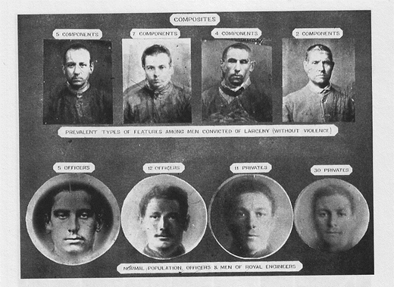
Image 3. Prevalent Types of Features among Men Convicted of Larceny (without Violence) -Normal Population. Officers and Men of the Royal Engineers.
The model for good, controlled reproduction was explicit -horse-breeding:
The racist implications of the project were clear enough. It will be appropriate to recall in this context that the word "raza" (as well as its counterparts in other languages, like Italian "razza," English "race," French "race") derive, as the Italian philologist Gianfranco Contini demonstrated a long time ago, from haras, an old French word meaning "horse-breeding."
8. The impact of Galton's "composite photographs" that I explored in my essay, was independent (as is often the case) of the ideology that inspired them. Most famously, Ludwig Wittgenstein repeatedly referred, both explicitly and implicitly, to Galton's "composite photographs:" first, stressing the traits shared by all family members, and later, reflecting on the overall result of the experiment in order to propose a different, looser definition of "family resemblances." Galton's experiments attracted the attention of Sigmund Freud, Gregory Bateson, and innumerable others. Galton's visual presentation can be regarded as a cognitive challenge or a cognitive tool. What attracted me in those images was the compression of a chronological sequence (different generations within one family, for instance) into a single image, thereby turning time into space, or (as linguists would say) diachrony into synchrony. As you may have guessed, I immersed myself once again into my obsessive ruminations about morphology and history. But there was also something else. In my essay I advanced a comparison between Galton's composite photographs and a different kind of visual artifact: genealogical trees. They were used for a long time as diagrams representing family relations: but since the early 19th century they were used by philologists as a metaphor to represent the genealogical relationship existing between different manuscript versions of the same text. This device was first used in 1847 by Jacob Bernays, the great philologist, in the form of a diagram to describe the manuscript transmission of Lucretius's poem De rerum natura:
Let us look at composite photographs and genealogical trees side by side: what elements do they share? The answer is simple. One word, repeated twice, will be sufficient: reproduction/reproduction. On the one hand, you have a sequence related to reproduction in a biological sense: members of the same family, who may belong to different generations. On the other, reproduction in the material sense: different manuscripts copying the same text. I have been working for many years on this ambivalent notion -reproduction/reproduction- focusing on Dante (Ginzburg 2006; 2010a; 2010b). For a long time biological reproduction worked as a metaphor for mechanical reproduction. As an example, I will quote a famous passage by Erasmus, the sixteenth century humanist, as well as the comment made by Sebastiano Timpanaro in his fundamental book The Genesis of Lachmann's Method:
In his Adagia [Erasmus] proposed a correction to a proverbial expression used in Aristotle's Metaphysics, and observed: "The agreement of the manuscripts will not seem at all astonishing to those who have a modicum of experience in assessing and collating [that is, comparing] manuscripts. For it very often happens that an error of the archetype, so long as it has some specious appearance of the truth, goes on to propagate itself in all the books that form as it were its descendants 'and the children of the children and those who are born later?'" (Timpanaro 2005, 49)
The last line is a quotation from Homer's Iliad (20, 308) that Erasmus slightly adapted to the context. The point is clear: an error in the archetype (a word bound to become a fundamental tool, with different meanings, among philologists) will be propagated by its descendants. Cultural transmission took biological transmission as a model, using expressions like "family of manuscripts." In the twentieth century, when biologists started to use expressions like "genetic code," the metaphor was reversed.
9. Somebody might ask: what does all this have to do with the topic I started from, i.e. werewolves?
Here is my answer: I will consider the transmission of traditions and beliefs concerning werewolves to be something comparable (notwithstanding a fundamental difference I will mention in a moment) to the transmission of a text. Therefore, I will try to approach my topic using the techniques of textual philology, as described by Paul Maas in his Textual Criticism, a short, dense book which has become an indispensable reference ever since it first appeared for anybody working in the field of textual philology.
It can proved [Maas wrote] that two witnesses (B and C) [witnesses, i.e. manuscripts] belong together as against a third (A) by showing an error common to B and C of such a nature that it is highly improbable that B and C committed it independently of each other. Such errors may be called "conjunctive errors" (errores conjunctivi). (Maas 1958, 43)9
In what sense are they "conjunctive?" Because errors which are not banal prove that families of manuscripts are connected: either because they are dependent on each other, or because they derive from a common ancestor. ("Families," "ancestor," etc., as you may see, in this domain biological metaphors surface are unavoidable). This idea, which had already inspired the editorial practice of Poliziano, the fifteenth century humanist (as Timpanaro has shown), gave birth to modern textual philology (Timpanaro 2003, 17-18).
At this point I am confronted with a serious difficulty. Textual philology tries to reconstruct an (most often lost) original text, most frequently one that has been lost and which has usually been corrupted by copyists in its transmission. My aim in analyzing the traditions related to werewolves is completely different. I am not trying to reconstruct an original set of beliefs: I am interested in the ways in which some ancient (possibly lost forever) beliefs have been reworked and modified over the course of centuries and millennia. For this reason I am rephrasing Paul Maas's notion of "conjunctive errors" as "conjunctive anomalies."10 It must be noted that Maas, after having stressed the distinction between anomaly and singularity (but without clarifying it), referred to anomalies in the following terms: "As a rule, no writer will aspire to an anomaly for its own sake; an anomaly is a consequence of his desire to say something out of the ordinary for which the normal mode of expression was found to be inadequate" (Maas 1958, 13).11
Maas is describing the activity of an individual writer who makes innovative experiments vis-à-vis literary tradition.12 I am trying to reconstruct cultural innovations vis-à-vis a common set of beliefs, transmitted by a group and articulated by specific individuals (Ginzburg 2004, 552). But the dates of the recorded evidence did not necessarily coincide with the date of the innovations: as I wrote a long time ago "very recent testimony might preserve traces of much earlier phenomena" (Ginzburg 1989a, 28; XXVIII, 1991a, 14). I should have recalled what Giorgio Pasquali, the great philologist, had written in his book Storia della tradizione e critica del testo: recentiores non deteriores, that more recent manuscripts can preserve an uncorrupted version of a passage from an old text (Pasquali 1974, 41). My genealogical tree, therefore, will present a series of formal connections, disregarding both chronology and geography (traditionally regarded as the two eyes of history).
These anomalous traits (a, b, c, d) are too specific to be ascribed to chance: I consider them "conjunctive anomalies." Therefore, A and B3, Friulian benandanti and the Baltic werewolf "Old Thiess," fighting for the fertility of the crops, can be regarded as partially overlapping developments from a set of beliefs rooted in a distant, undocumented past; I have marked it with an asterisk. Is the asterisk pointing to a single event or to a series of independent innovations, followed by a hybrid combination of different traits? We'll never know.
This diagram translates a series of cultural transmissions related to different times and places into a synchronic image. Will this diagram be the conclusion of my argument? Only temporarily. From morphology I will have to go back to contexts, to actors, to history.
Anomalías conjuntivas: una reflexión sobre los hombres lobo*
Carlo Ginzburg**
DOI: https://dx.doi.org/10.7440/res60.2017.09
* Resultado de una conferencia dictada en la Presentación de Publicaciones de la Facultad de Ciencias Sociales de la Universidad de los Andes (Colombia) en 2016. Bruce Lincoln comentó una versión anterior de este artículo; María Luisa Catoni comentó la presente. Estoy profundamente agradecido a ambos por sus comentarios críticos. Muchas gracias a Anna Ciammitti por su ayuda en la construcción del diagrama final. Sobra decir que la responsabilidad de lo que escribí es mía.
** PhD de la Università di Pisa (Italia). Profesor Emérito de la University of California, Los Angeles (Estados Unidos) y de la Scuola Normale Superiore di Pisa (Italia).
¿Por qué elegí este tema para nuestra discusión? Hay varias respuestas; comencemos por lo más obvio. En el mundo cada vez más globalizado en que habitamos, un enfoque comparativo de la historia o la antropología resulta inevitable. Las historias sobre los hombres lobo se propagaron desde Europa a otros continentes: cualquier acercamiento a este tema necesariamente implicará un marco comparativo, pero la comparación no ha de hacerse a la ligera: deberíamos reflexionar también sobre sus objetivos, suposiciones y métodos. Eso es lo que intentaré hacer, enfocándome en un estudio de caso específico relacionado con un tipo especial de hombre lobo.
1. Mi elección también se basa en una razón personal. Hace cincuenta años publiqué mi primer libro, I benandanti, traducido al inglés como The Night Battles. La traducción al español, publicada por la Universidad de Guadalajara, evocó el título y subtítulo en italiano: Los benandanti. Brujería y cultos agrarios entre los siglos XVI y XVII (2005). Con base en una serie de juicios inquisitoriales, algunos de ellos muy largos y detallados, el libro exploró un fenómeno previamente desconocido registrado en Friul, en la frontera nororiental de Italia, no lejos de Venecia. Hombres y mujeres que se llamaban a sí mismos benandanti (es decir, personas que hacen el bien), en su mayoría de origen campesino, argumentaron ante los inquisidores que, habiendo nacido vestidos (envueltos en el saco amniótico), debían salir de su cuerpo cuatro veces al año para luchar en espíritu, a veces transformados en animales, contra brujas y magos, a fin de asegurar la fertilidad de los cultivos. Como arma, los benandanti utilizaban ramas de hinojo, mientras que las brujas usaban cañas de sorgo. "Y si los benandanti vencen", dijo uno de ellos, "la cosecha de ese año será abundante".
Los inquisidores escucharon con asombro esas historias: nunca habían encontrado nada parecido (mi reacción al descubrir esos documentos no fue distinta a la suya; una analogía en la que comencé a reflexionar algunos años después [Ginzburg 1989b]). Los benandanti declaraban ser cazadores de brujas; los inquisidores, por el contrario, los consideraban como verdaderos brujos que hacían parte de un culto diabólico. Basándose en diferentes estrategias -preguntas tendenciosas u, ocasionalmente, tortura-, los inquisidores intentaron persuadirlos de que lo eran. Finalmente, luego de cincuenta años y de numerosos juicios cargados de interminables preguntas y negaciones, los benandanti comenzaron a confesar (aunque no del todo) que eran brujos, introduciendo la hostil imagen que los inquisidores les impusieron.
Lo que descubrí en los archivos friulanos era, en mi opinión, un fragmento de una profunda capa de cultura campesina: la asombrada reacción de los inquisidores ante la descripción de los benandanti de sus batallas nocturnas contra las brujas fue lo suficientemente elocuente. Pero, ¿hasta qué punto el caso friulano, indudablemente excepcional desde un punto de vista documental, también se relacionaba con una realidad única? En mi libro propongo la siguiente hipótesis: lo que tuvo lugar en Friul habría presumiblemente ocurrido en otras partes de Europa (y tal vez, diría hoy, también en otros continentes). Las creencias campesinas, en su mayoría centradas en temas asociados con la fertilidad y posiblemente arraigadas en un pasado precristiano, fueron reinterpretadas por los inquisidores como cultos diabólicos, y subsecuentemente erradicadas. Un caso único, también excepcional, parece apoyar mi hipótesis: un juicio que tuvo lugar en 1692 en Wenden, hoy Cēsis, no lejos de Riga (entonces Livonia, actualmente Letonia). El inculpado, un anciano apodado "Viejo Thiess", fue acusado de herejía: contrarrestó objetando que él era un hombre lobo y que, por tanto, tres veces al año solía ir al infierno con otros hombres lobo durante la noche para recuperar las semillas de grano que las brujas se habían llevado. "Somos los sabuesos de Dios", dijo Thiess, refiriéndose a los hombres lobo, subvirtiendo así el estereotipo tradicional que los identificaba con seres diabólicos.
He aquí un hombre lobo diciendo que, junto con otros como él, solía luchar en espíritu contra las brujas para preservar la fertilidad de las cosechas. ¿Podría comparar el caso aislado y anómalo de Thiess con los benandanti friulanos? Pensé que sí, pero, ¿qué tipo de comparación podría usar? ¿Morfológica? ¿O histórica? La primera perspectiva tiene en cuenta las analogías formales únicamente, sin considerar el espacio y el tiempo, mientras que la segunda analiza las mismas analogías desde una perspectiva basada en el espacio y el tiempo que plantea la posibilidad de influencias mutuas, de una filiación común, etcétera. La primera vez que me topé con esta alternativa fue cuando siendo estudiante leí el gran libro de Marc Bloch, Les rois thaumaturges (de 1924, traducido al inglés como The Royal Touch). En la introducción, Bloch contrastó dos tipos diferentes de comparación: "etnológica" (no usó la palabra "morfológica") e "histórica", basado en fenómenos relacionados con sociedades que habían sido desconectadas o conectadas en épocas históricas, respectivamente. Siguiendo a Bloch, en mi primer libro opté explícitamente por limitarme sólo a la comparación histórica -una elección que me obligó a sugerir que las semejanzas entre los benandanti y Thiess, el hombre lobo de Livonia, apuntaban a una conexión histórica (completamente olvidada) entre Friul y la región báltica, implicando posiblemente elementos eslavos que las dos tienen en común-.
2. Todo esto era por completo especulativo y extremadamente vago. Un sentimiento creciente de insatisfacción con esta clase de historia hipotética probablemente reforzó mi atracción por la morfología, una atracción ya nutrida por mi interés en la historia del arte y, sobre todo, por el connoisseurship (las atribuciones de la historia del arte suelen partir de rasgos puramente formales). Lo que encontré tan desafiante en la morfología fue su orientación ahistórica, su desprecio, como he dicho, tanto del espacio como del tiempo, que la hace poco interesante, o incluso desagradable, para la mayoría de los historiadores. Pero por mucho tiempo he sentido una atracción personal hacia el abogado del diablo: el personaje ficticio que, de acuerdo con las reglas de los juicios de canonización del siglo XVII, hacía preguntas difíciles, a veces agresivas, sobre los potenciales santos. Pertenezco a la generación que presenció el triunfo del estructuralismo: una aproximación que Claude Lévi-Strauss repetidamente contrapuso a la historia. El estructuralismo, y específicamente Lévi-Strauss, tuvo el papel de un interlocutor desafiante para mí por muchos años -una suerte de abogado del diablo-. Consideré la morfología, no como una alternativa a la historia, sino como una herramienta que podría haber abierto la posibilidad de superar la falta de evidencia histórica, arrojando algo de luz sobre las analogías desconcertantes entre los benandanti friulanos y el viejo hombre lobo de Livonia. Sospecho que, a un nivel subconsciente, estaba bajo la influencia de la línea de la Eneida de Virgilio, que Sigmund Freud tomó como lema para su obra La interpretación de los sueños: "flectere si nequeo superos, Acheronta movebo" (Eneida, VII, 312), que puede traducirse como: "Si no puedo desviar la voluntad de los poderes superiores, entonces moveré el río Acheron" o "Si no puedo desviar la voluntad del cielo, entonces moveré el infierno". Para mí, el cielo era la historia; la morfología era el infierno.
3. Obviamente, no me estaba comparando con Freud: pero Freud ciertamente ha sido para mí, por muchos años y de muchas maneras, un modelo intelectual. No fue por casualidad, tal vez, que el siguiente paso en mi investigación se centró en uno de los estudios de casos más famosos de Freud: "El hombre lobo". A la edad de tres, cuatro o posiblemente cinco años, el paciente, un ruso, tuvo un sueño: seis o siete lobos blancos estaban sentados en las ramas de un árbol, mirándolo fijamente. Este fue el comienzo de una larga historia de neurosis. En mi ensayo "Freud, l'uomo dei lupi e i lupi mannari" (1986) ("Freud, el hombre de los lobos y los hombre lobo"), me enfoqué en un detalle de la vida del paciente que Freud registró debidamente, sin darse cuenta de su relevancia. El paciente había nacido vestido. En el folklore ruso, los hombres lobo nacían vestidos. El sueño del pequeño niño ruso fue presumiblemente nutrido por las historias de su nianja (nana). Era comparable a los sueños iniciáticos de los benandanti friulanos, que también nacieron vestidos. "En la pesadilla del hombre lobo", escribí, "discernimos un sueño de carácter iniciático, inducido por el entorno cultural circundante o, más precisamente, por una parte de él. Sometido a presiones culturales opuestas (la nana, la institutriz inglesa, sus padres y profesores), el destino del hombre lobo difirió del que podría haber sido el caso dos o tres siglos antes. En lugar de transformarse en hombre lobo, el paciente se convirtió en un neurótico al borde de la psicosis" (Ginzburg 1989b, 148).
4. He discutido en otras ocasiones las implicaciones metodológicas de mi estudio de caso con relación al de Freud; aquí me centraré en el dossier del hombre lobo que he estado construyendo (y reconstruyendo) hasta ahora. El Hombre-Lobo, paciente ruso de Freud, me hizo tomar conciencia de un elemento que en principio no había considerado: como dije anteriormente, en el folclore ruso se creía que los hombres lobo, al igual que los benandanti friulanos, habían nacido vestidos. Debo señalar que este detalle no fue mencionado en el juicio contra el "Viejo Thiess". Muchos años después, tras una larga trayectoria de investigación, incluí tanto el caso de Livonia como el de los benandanti en una perspectiva mucho más amplia (de hecho, eurasiática), enfocada en el chamanismo y sus variaciones: uno de los elementos, argumenté, que finalmente también entraba en el estereotipo del Sabbath de las brujas, o aquelarre (Ginzburg 1989a; 1991b; 2003).
Mi libro Storia notturna. Una decifrazione del sabba (1989a) (traducido al español como Historia nocturna. Un desciframiento del aquelarre) ha sido muy debatido, tanto en conjunto como en detalle. En particular, mi interpretación del juicio de Livonia ha sido criticada en repetidas ocasiones; recientemente, y con mayor autoridad, por Bruce Lincoln, profesor de Historia de las Religiones de la Universidad de Chicago (Blécourt 1993; 2007a; 2007b, 128-129; Lincoln 2015a). Su ensayo plantea algunos problemas cruciales sobre comparación que me gustaría abordar: una nueva ronda de un debate amistoso, con frecuencia polémico, que ha tenido lugar entre Bruce Lincoln y yo por varios años.
Lincoln rechazó firmemente la posibilidad de identificar algunos fragmentos de creencias antiguas en el alegato del "Viejo Thiess" frente a los asombrados jueces de Wenden. Tras haber evocado a varios eruditos (incluyéndome) que asumieron que las creencias livonianas sobre los hombres lobo eran "un remanente de una profunda capa cultural y religiosa", Lincoln comentó: "los resultados de este tipo de comparación siguen siendo, en el mejor de los casos, hipotéticos; la historia de esos grandes proyectos comparativos es en sí misma una advertencia" (Lincoln 2015b, 119). Lincoln siguió una trayectoria muy diferente, presentando una lectura detallada del juicio de Livonia como "un ejemplo notable de resistencia religiosa, legal, cultural y política" por parte del "Viejo Thiess", un campesino de Livonia, ante (y contra) un grupo de jueces, todos ellos (con una excepción) con nombres germanos que indicaban su pertenencia a la élite alemana (los registros del juicio están en alemán: si bien no está claro, Lincoln señaló, si Thiess y los testigos hablaban dicho idioma) (Lincoln 2015b, 115). Por lo tanto, la inversión del estereotipo de los hombres lobo que Thiess representa, lejos de estar arraigada en una capa cultural anterior, posiblemente antigua, era el resultado (de acuerdo con Lincoln) de un acto audaz de "apropiación y reelaboración de un discurso tendencioso, utilizado por la élite alemana para menospreciar y degradar a los campesinos" (Lincoln 2015b, 132).
En sus "Theses on Comparison", en coautoría con Cristiano Grottanelli (un historiador de religiones recientemente fallecido), Bruce Lincoln argumentó que, tras el fracaso de importantes proyectos comparativos, "es hora de que consideremos un comparatismo de un tipo más débil y modesto que (a) se enfoque en un número relativamente pequeño de comparaciones que el investigador pueda estudiar de cerca; (b) preste la misma atención a las relaciones de similitud y a las de diferencia; (c) conceda equitativamente dignidad e inteligencia a todas las partes consideradas y (d) preste atención a los contextos y subtextos sociales, históricos y políticos de los textos religiosos y literarios" (Lincoln y Grottanelli 2012, 123).
Pero, incluso una comparación restringida invalida inmediatamente la supuesta singularidad del caso del "Viejo Thiess". Luego de haber citado un texto que describe a los hombres lobo y sus ataques contra los rebaños, Bruce Lincoln menciona, en una nota al pie de página, una serie de trabajos que cuentan "historias similares". Pero dos de ellas, como lo mencioné en mi libro Storia notturna, tenían un tono diferente (Ginzburg 1989a, 130-134; 1966, 40; Lincoln 2015b, 114-115). En sus Commentarius de praecipuis generibus divinationum (Comentarios sobre los tipos más importantes de adivinación, de 1560), Caspar Peucer, profesor de Medicina y Matemáticas de la Universidad de Wittenberg, se refirió a un episodio que había escuchado de un estudiante de Livonia, Hermann Witekind, quien más tarde publicó un libro (1586) sobre brujería bajo un seudónimo (Augustin Lercheimer). Un campesino que vivía no lejos de Riga (es decir, en la misma región donde el "Viejo Thiess" viviría un siglo después) se quedó dormido repentinamente. Se lo identificó como un hombre lobo, puesto que los hombres lobo solían sufrir una suerte de desmayo antes de su metamorfosis imaginaria en lobos (Peucer 1560, 141v-142r). Tan pronto el hombre despertó, Peucer continuó, "dijo que había estado persiguiendo a una bruja que volaba en los alrededores, convertido en una mariposa de fuego (los hombres lobo presumen de ser impulsados a mantener alejadas a las brujas)" (Peucer 1560, 144v).
De la sección sobre los hombres lobo en la detallada obra de Peucer sobre adivinación surgen algunos "fragmentos relativamente inmunes a la distorsión, de la cultura que la persecución se proponía erradicar" (Ginzburg 1991a, 13). El pequeño detalle que acabo de mencionar es particularmente relevante porque muestra que la imagen no convencional de los hombres lobo como enemigos de las brujas, en la que el "Viejo Thiess" insistía, no carecía de precedentes. La inventiva individual tuvo lugar dentro del marco de una gramática preexistente. Para explorar sus características, tenemos que regresar al enorme dossier histórico centrado en los hombres lobo.
5. Pero, primero, una advertencia tomada de las "Theses on Comparison" de Bruce Lincoln. En una de ellas, el "tipo difusionista" es rechazado por los siguientes motivos:
[...] el intento de mostrar la transmisión de rasgos culturales siempre anticipa -aunque sólo subtextualmente- una clasificación tendenciosa de los pueblos involucrados, constituyendo la primacía temporal ("originalidad", "invención", "autenticidad") como el signo de estatus superior, mientras que en cambio trata a la recepción como una marca de atraso relativo, necesidad y sumisión. (Lincoln y Grottanelli 2012, 123)
Me pregunto si alguien ha afirmado, directa o indirectamente, que la invención de creencias relacionadas con los hombres lobo era un signo de estatus superior. Pero el punto real está en otra parte: tiene que ver con la ecuación tácita del "tipo difusionista" con la "transmisión de la cultura". El difusionismo es un modelo explicativo burdo, simplista; la difusión, como la transmisión de rasgos culturales, es una realidad. El difusionismo debe ser rechazado, ya que toma la difusión por sentada; pero debemos tratar de entender cómo la transmisión de rasgos culturales es posible. Hace mucho tiempo, Claude Lévi-Strauss hizo algunas observaciones densas y desafiantes sobre este tema:
Incluso si se confirmaran las reconstrucciones más ambiciosas de la escuela difusionista, todavía deberíamos enfrentarnos a un problema esencial que no tiene nada que ver con la historia. ¿Por qué un rasgo cultural que ha sido adoptado o difundido durante un largo período histórico debería permanecer intacto? La estabilidad es no menos misteriosa que el cambio [...] Las conexiones externas pueden explicar la transmisión, pero sólo las conexiones internas pueden dar cuenta de la persistencia. Dos tipos de problemas completamente diferentes están involucrados aquí, y el intento de explicar uno no prejuzga en modo alguno la solución que debe darse al otro. (Ginzburg 1991a, 225; Lévi-Strauss 1977, 258)
La reciente publicación de una conferencia titulada "Una ciencia revolucionaria: la etnografía", que Lévi-Strauss dictó en 1937 a un grupo de militantes de izquierda, revela el trasfondo oculto y autocrítico de su comentario posterior sobre "las más ambiciosas reconstrucciones de la escuela difusionista" (Lévi-Strauss 2016). El compromiso temprano de Lévi-Strauss con el difusionismo fue seguido de un rechazo a este, que identificó al difusionismo con la historia. Yo diría, por el contrario, que el objetivo de la historia incluye conexiones externas e internas, cambio y continuidad. Pero, para lograr ese objetivo (ciertamente ambicioso), los historiadores deberían escuchar al abogado del diablo: la morfología.
6. Las razones por las que elegí mi estudio de caso se verán ahora con claridad. Los hombres lobo típicamente nos confrontan con un dilema: el potencial respectivo de la comparación amplia frente a la restringida. La transmisión de creencias acerca de los hombres lobo implica una larga trayectoria cronológica (dos milenios y medio) y difusión generalizada. El núcleo central parece bastante estable: en el siglo V a. C. Heródoto, el historiador griego, habló de una tribu -los Neuri- añadiendo, con incredulidad, que cada uno de sus miembros "una vez al año [...] se convierte en lobo por unos días y luego retoma su forma original" (Historias, IV, 105, 1-2). En la novela Satiricón, escrita quinientos años después por el escritor latino Petronio (27 A.D.-66 A.D.), la identificación con una población específica desaparece. La historia trata de un soldado común que camina de noche por un cementerio acompañado de un amigo, quien, luego de "orinar alrededor de su ropa, de repente se convierte en lobo" (Satiricón, 42). Al día siguiente, el compañero del soldado oye decir que un lobo había penetrado en el redil y matado las ovejas; alguien le atravesó el pescuezo con una lanza. Más tarde, el compañero vio al soldado acostado en un lecho mientras un médico le curaba el cuello: entonces, entiende, "era un hombre lobo" (intellexi illum versipellem esse). La palabra latina versipellis significa, literalmente, alguien que es capaz de cambiar su propia piel, cambiar de forma; por tanto, metafóricamente, alguien astuto, artero, ingenioso. La transformación del humano en bestia es precedida por una secuencia ritual: quitarse la ropa, orinar alrededor de su ropa, convertirse en lobo. Mientras tanto (dice con horror el personaje de Petronio), la ropa se convirtió, primero, en piedra, y luego, en un charco de sangre. La ropa está en la frontera entre el mundo humano y el bestial. En su Historia Natural, Plinio el Viejo (23-79 A.D.) comenta sobre el término versipelles refiriéndose a una historia contada por un escritor griego: un hombre perteneciente a cierta familia se quitó la ropa, la colgó en un roble, atravesó a nado un pantano y se convirtió en un lobo; nueve años después regresó y encontró su ropa. Plinio, que contaba la historia con incredulidad, consideraba el último detalle como un signo extremo de la credulidad griega (Naturalis Historia, VIII, 34, 80-84).
Nacer en el saco amniótico -un rasgo que comparten los benandanti frulianos con los hombres lobo eslavos- también significaba estar envuelto en un tipo especial de tela. "El amnios", escribí hace muchos años, "es un objeto que pertenece al mundo de los muertos -o al de los no nacidos-. Un objeto limítrofe ambiguo que marca figuras limítrofes" (Ginzburg 1991a, 265; véase también King 1986). Los versipelles que pueden cambiar de una piel a otra, de un mundo a otro, fueron una de ellas. En la transmisión de esas creencias, una "experiencia primaria de naturaleza corpórea" desempeñó, sostuve, un papel fundamental (Ginzburg 1991a, 265-266). Hasta aquí la morfología. Pero como he señalado, la morfología puede ser vista como un instrumento de la historia, no como una alternativa a ella. Estoy decididamente a favor de un enfoque en primer plano de un único caso -el "Viejo Thiess", por ejemplo-, pero no podemos ignorar los múltiples contextos en los que el único caso está inscrito. Del marco al cuadro, y al revés: esta trayectoria -podría llamarse, si se quiere, microhistoria- me parece particularmente prometedora.
7. Bruce Lincoln objetaría que mi enfoque es demasiado hipotético. Habiendo pasado muchos años reflexionando sobre la cuestión de la prueba, soy muy sensible a este tipo de crítica (Ginzburg 1999). Por lo tanto, en lugar de insistir en mi argumento anterior, trataré de basarme en una estrategia diferente para probarlo. Desarrollaré las implicaciones de un ensayo que publiqué hace algunos años, que trataba un tema completamente diferente: su título en español es "Semejanzas de familia y árboles de familia: dos metáforas cognoscitivas" (Ginzburg 2004; 2007). La primera parte de mi ensayo trata de los "retratos compuestos": un experimento realizado alrededor de 1880 por Francis Galton, el famoso estadístico y erudito británico. A raíz de una sugerencia que había recibido de un corresponsal de Nueva Zelanda, Galton superpuso una serie de negativos transparentes de miembros de una misma familia y luego tomó una fotografía del montaje. El resultado es una única imagen, comprimida, inquietante y fantasmal:
Imagen 1. Retrato compuesto de los miembros de una familia.
Un centro más oscuro rodeado de un halo con más luz: el primero corresponde a rasgos que son recurrentes en la familia; el segundo, a rasgos menos frecuentes o únicos. Un conjunto de semejanzas de familia se exhibe frente a nosotros, de una forma muy inusual. El experimento parece neutral, incluso inocente; no lo era. Estuvo inspirado en la eugenesia, un proyecto que buscaba mejorar la calidad genética de la población humana (de hecho, británica). Galton utilizó fotografías para identificar tipos de grupos sociales específicos, sugiriendo que la capacidad reproductiva de minorías marginales potencialmente peligrosas, como los judíos o criminales, debería ser controlada:
Imagen 2. El tipo judío.
/
Imagen 3. Tipos prevalentes de rasgos entre hombres condenados por robo (sin violencia) -población normal. Oficiales y hombres del real cuerpo de ingenieros.
El modelo para una buena reproducción controlada era explícito -la cría de caballos-:
Imagen 4. Retratos compuestos de ejemplares de pura sangre.
Las implicaciones racistas del proyecto fueron lo suficientemente claras. Conviene recordar en este contexto que la palabra raza (así como sus equivalentes en otros idiomas: razza, en italiano; race, en inglés; race, en francés) se deriva, como el filólogo italiano Gianfranco Contini lo demostró hace mucho tiempo, de haras, una antigua palabra francesa que significa "cría de caballos".
8. El impacto de las "retratos compuestos" de Galton que exploré en mi ensayo no dependió (como suele ser el caso) de la ideología que los inspiró. Ludwig Wittgenstein hizo referencia en repetidas ocasiones, tanto explícita como implícitamente, a los "retratos compuestos" de Galton: en primer lugar, subrayando los rasgos compartidos por todos los miembros de la familia, y posteriormente, reflexionando sobre el resultado global del experimento, para proponer una definición diferente y más flexible de "semejanzas de familia". Los experimentos de Galton atrajeron la atención de Sigmund Freud, Gregory Bateson y muchos más. La presentación visual de Galton puede considerarse como un desafío cognitivo o una herramienta cognitiva. Lo que me atrajo de esas imágenes fue la compresión de una secuencia cronológica (distintas generaciones de una familia, por ejemplo) en una misma imagen, que convirtió, así, el tiempo en espacio o (como dirían los lingüistas) la diacronía en sincronía. Como puede haberse adivinado, me sumergí una vez más en mis cavilaciones obsesivas sobre morfología e historia. Pero había algo más. En mi ensayo planteo una comparación entre los retratos compuestos de Galton y un tipo diferente de artefacto visual: los árboles genealógicos. Fueron utilizados por largo tiempo como diagramas que representan las relaciones familiares: pero desde principios del siglo XIX, los filólogos los usaron como una metáfora para representar la relación genealógica existente entre distintas versiones manuscritas del mismo texto. Este recurso fue utilizado por primera vez en 1847 por Jacob Bernays, el gran filólogo, en forma de diagrama para describir la transmisión manuscrita del poema de Lucrecio De rerum natura:
Imagen 5. Retrato compuesto de los miembros de una familia.
Imagen 6. Jacob Bernays, stemma codicum de Lucrecio.
Observemos los retratos compuestos y los árboles genealógicos uno junto al otro: ¿qué elementos comparten? La respuesta es simple. Una palabra, repetida dos veces, será suficiente: reproducción/reproducción. Por un lado, una secuencia relacionada con la reproducción en un sentido biológico: miembros de una misma familia, que pueden pertenecer a generaciones distintas. Por el otro, reproducción en el sentido material: manuscritos diferentes que copian el mismo texto. He estado trabajando en esta noción ambivalente durante muchos años -reproducción/reproducción- enfocada en Dante (Ginzburg 2006; 2010a; 2010b). Por mucho tiempo, la reproducción biológica funcionó como una metáfora de la reproducción mecánica. Como ejemplo, citaré un famoso pasaje de Erasmo, el humanista del siglo XVI, así como el comentario de Sebastiano Timpanaro en su libro fundamental The Genesis of Lachmann's Method:
En su Adagia [Erasmo] propuso una corrección a una expresión proverbial usada en la Metafísica de Aristóteles, y observó: "El acuerdo de los manuscritos no resultará en absoluto sorprendente a quienes tengan un mínimo de experiencia en evaluar y cotejar [es decir, comparar] manuscritos. Pues muy a menudo sucede que un error del arquetipo, siempre que tenga alguna apariencia engañosa de la verdad, continúa propagándose en todos los libros que tomen forma como sus descendientes y en 'los hijos de sus hijos que sucesivamente nazcan'". (Timpanaro 2005, 49)
La última línea es una cita de la Ilíada de Homero (20, 308), que Erasmo adaptó ligeramente al contexto. El punto es claro: un error en el arquetipo (una palabra destinada a convertirse en una herramienta fundamental, con diferentes significados, entre los filólogos) será propagado por sus descendientes. La transmisión cultural tomó como modelo la transmisión biológica, utilizando expresiones como "familia de manuscritos". En el siglo XX, cuando los biólogos empezaron a usar expresiones como "código genético", la metáfora se invirtió.
9. Alguien podría preguntar: ¿qué tiene todo esto que ver con el tema con el que comencé, es decir, los hombres lobo?
He aquí mi respuesta: consideraré la transmisión de tradiciones y creencias acerca de los hombres lobo como algo comparable (a pesar de una diferencia fundamental que mencionaré en un momento) a la transmisión de un texto. Por tanto, trataré de abordar mi tema utilizando las técnicas de la filología textual, como las describe Paul Maas en su Crítica del texto, un libro corto y denso que se ha convertido en una referencia indispensable desde que apareció por primera vez, para quien trabaje en el campo de la filología textual.
Puede comprobarse [escribió Maas] que dos testigos (B y C) [testigos, es decir, manuscritos] son inseparables con respecto a un tercero (A) mostrando un error común a B y C de naturaleza tal que sea altamente improbable que B y C lo cometieran independientemente uno del otro. Tales errores pueden ser llamados "errores conjuntivos" (errores conjunctivi). (Maas 1958, 43)
¿En qué sentido son "conjuntivos"? Porque los errores que no son banales demuestran que las familias de manuscritos están conectadas: ya sea porque dependen unas de otras o porque se derivan de un antepasado común. ("Familias", "antepasado", etcétera; como puede verse, en este ámbito, el surgimiento de metáforas biológicas es inevitable). Esta idea, que ya había inspirado la práctica editorial de Poliziano, el humanista del siglo XV (como lo ha demostrado Timpanaro), dio origen a la filología textual moderna (Timpanaro 2003, 17-18).
En este punto me enfrento a una seria dificultad. La filología textual intenta reconstruir un texto original (casi siempre perdido), con mayor frecuencia, uno que se ha perdido y que normalmente ha sido corrompido por los copistas en su transmisión. Mi objetivo al analizar las tradiciones relacionadas con los hombres lobo es completamente diferente. No estoy tratando de reconstruir un conjunto original de creencias: estoy interesado en las formas en que algunas creencias antiguas (posiblemente perdidas para siempre) han sido reelaboradas y modificadas a lo largo de siglos y milenios. Por esta razón, estoy reformulando la noción de Paul Maas de "errores conjuntivos" como "anomalías conjuntivas". Hay que señalar que Maas, después de haber hecho énfasis en la distinción entre anomalía y singularidad (pero sin aclararla), se refirió a las anomalías en los siguientes términos: "Por regla general, ningún escritor aspirará a una anomalía por ella misma; una anomalía es una consecuencia de su deseo de decir algo fuera de lo común para lo cual se encontró que el modo normal de expresión era inadecuado" (Maas 1958, 13).
Maas está describiendo la actividad de un escritor individual que hace experimentos innovadores con respecto a la tradición literaria. Estoy tratando de reconstruir innovaciones culturales frente a un conjunto común de creencias, transmitidas por un grupo y articuladas por individuos específicos (Ginzburg 2004, 552). Pero las fechas de la evidencia registrada no necesariamente coincidían con la fecha de las innovaciones: como escribí hace mucho tiempo, "testimonios muy recientes podrían conservar rastros de fenómenos mucho más antiguos" (Ginzburg 1989a, 28; XXVIII, 1991a, 14). Debería haber recordado lo que Giorgio Pasquali, el gran filólogo, había escrito en su libro Storia della tradizione e crítica del testo: recentiores non deteriores, respecto a que manuscritos más recientes pueden conservar una versión no corrompida de un pasaje de un texto antiguo (Pasquali 1974, 41). Mi árbol genealógico, por lo tanto, presentará una serie de conexiones formales, ignorando tanto la cronología como la geografía (tradicionalmente consideradas como los dos ojos de la historia).
Benandanti friulanos, nacidos vestidos (a)
sufren desmayos periódicos (b)
luchan contra las brujas (c)
por la fertilidad de las cosechas (d)
Hombres lobo nacidos vestidos (a)
B1
Hombres lobo
se desmayan (b)
B2
Hombres lobo luchan contra las brujas (c)
B3
"Viejo Thiess", un hombre lobo que luchaba contra las brujas (c) por la fertilidad de las cosechas (d)
Estos rasgos anómalos (a, b, c, d) son demasiado específicos para ser atribuidos al azar: los considero "anomalías conjuntivas". Por lo tanto, A y B3, los benandanti friulanos y el hombre lobo báltico, el "Viejo Thiess", que luchan por la fertilidad de los cultivos, pueden considerarse como variaciones parcialmente superpuestas de un conjunto de creencias arraigadas en un pasado lejano y no documentado; lo he marcado con un asterisco. ¿El asterisco apunta a un evento único o a una serie de innovaciones independientes, seguidas de una combinación híbrida de diferentes rasgos? Nunca lo sabremos.
Este diagrama traduce una serie de transmisiones culturales relacionadas con diferentes tiempos y lugares en una imagen sincrónica. ¿Será este diagrama la conclusión de mi argumento? Sólo temporalmente. De la morfología tendré que volver a los contextos, a los actores, a la historia.













